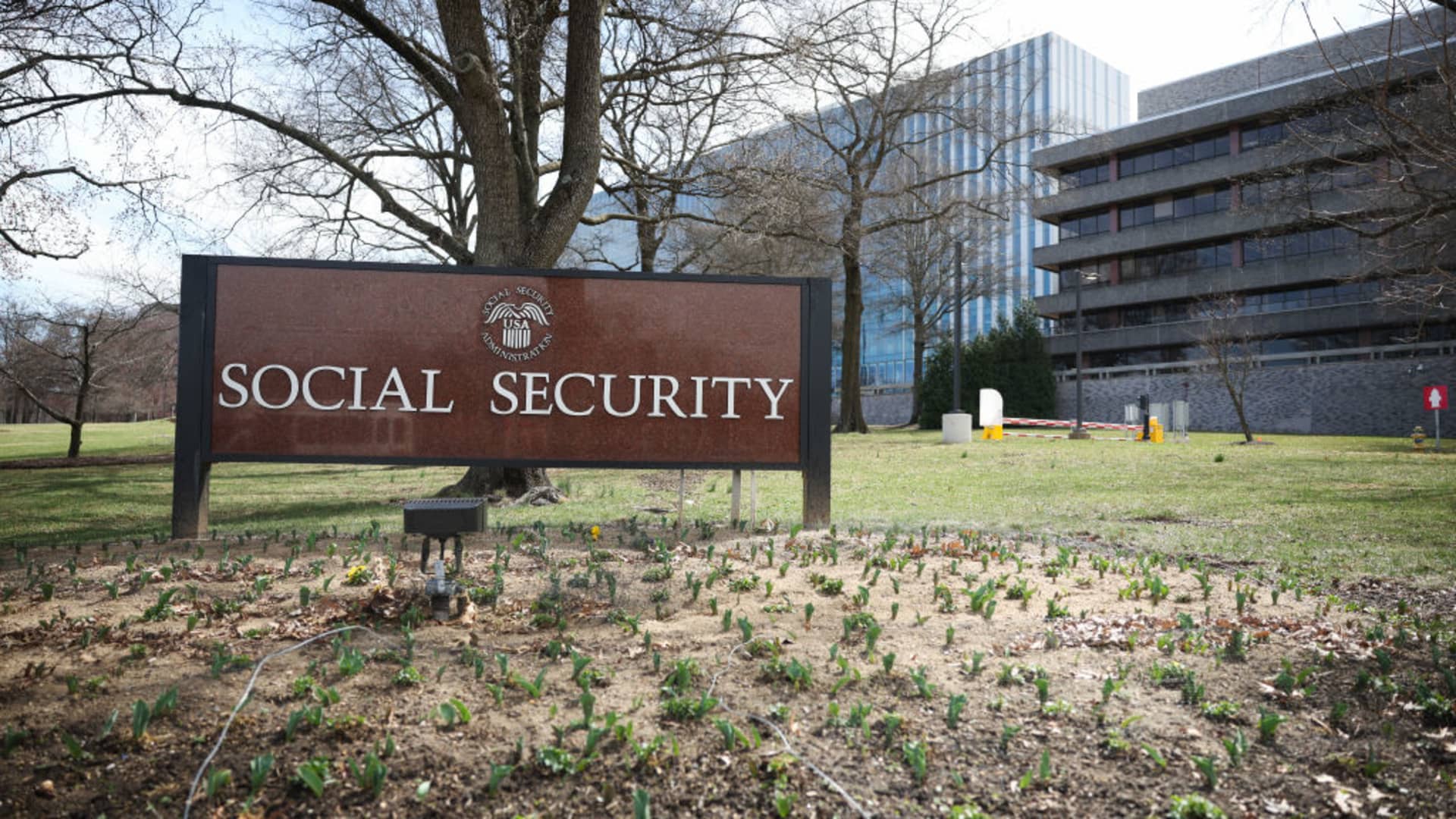The Good Brigade | DigitalVision | Getty Images
Older Americans have just a few days left to evaluate their Medicare coverage for next year.
Medicare’s annual open enrollment period for health plans and prescription drug coverage runs until Dec. 7. Experts say it’s worthwhile for Medicare’s 67.8 million beneficiaries to make sure they have the best coverage for their needs.
“Now is as good a time as any,” said Juliette Cubanski, deputy director of the program on Medicare policy at KFF, a provider of health policy research.
While many beneficiaries are comfortable with their plans and may be reluctant to change, it’s still a good idea to look at all the options that are available, she said.
“It’s possible that you could save money,” Cubanski said. For example, you may find a plan that offers lower cost sharing for expensive medications or offers better coverage or extra benefits, she said.
More from Personal Finance:
59% of Americans consider this the No. 1 sign of success
Millennials plan big holiday spending: ‘I see a lot of optimism’
These key 401(k) changes are coming in 2025
Beneficiaries should start with Medicare.gov as they start to shop for plans, according to Philip Moeller, author of “Get What’s Yours for Medicare: Maximize Your Coverage, Minimize Your Costs.”
Medicare.gov’s online plan finder can help provide an overview of the plans available in a beneficiary’s geographic area and the monthly premiums and specific costs associated with services provided through those plans, Cubanski said.
Trained counselors are also available to provide free Medicare advice in every state through the State Health Insurance Assistance Program, also known as SHIP.
To effectively compare plans, there are some helpful tips that are good to keep in mind, experts say.
Make sure you have access to preferred providers
Beneficiaries may choose to go with original Medicare — Parts A and B with the option to add Part D prescription drug coverage — or private Medicare Advantage plans.
With original Medicare, you can see any doctor in the country who accepts Medicare, so access is not an issue, Moeller said.
But with Medicare Advantage plans, there are provider networks that limit the choice of doctors and hospitals from which a beneficiary may choose, he said.
It’s best to check — not assume — that the doctors you want to see will be covered by your plan, Moeller said.
Call Medicare Advantage plans or medical providers directly to find out if they are still covered, as brochures can sometimes be outdated, Cubanski said.
Check if your prescription drugs are covered
U.S. President Joe Biden delivers remarks, during an event on Medicare drug price negotiations, in Prince George’s County, Maryland, U.S., August 15, 2024.
Ken Cedeno | Reuters
Starting in 2025, there’s a $2,000 annual out-of-pocket cap on prescription drug costs through Medicare Part D.
That change is due to the Inflation Reduction Act, a federal law enacted in 2022.
Consequently, insurance will pay more for about 8% of people who take expensive prescription medications, but they may look for ways to get their money back for the remaining 92%, Moeller said.
That may come in the form of higher co-pays or deductibles or less generous plan benefits.
“The details really matter this year for Part D plans,” Moeller said. “People should do their homework and make sure that their Part D plan still does what they wanted it to do.”
Medicare Advantage plans, on average, will see deductibles for prescription drug coverage increase next year. Typically, those have been around $50 per month on average, though next year that will go up to just over $200, according to Cubanski.
“People in Medicare Advantage on average, will be facing a higher deductible for drug coverage in 2025,” Cubanski said.
Pay attention to your out-of-pocket costs
Open enrollment provides an opportunity for beneficiaries to manage how much their overall out-of-pocket costs — including premiums, deductibles and coinsurance — may increase in 2025.
“Make sure that you have manageable out-of-pocket expenses for the year,” Moeller said.
With original Medicare, beneficiaries typically pay no premiums for Medicare Part A. However, in 2025, the standard monthly Part B premium will go up to $185 per month — a $10.30 increase from $174.70 this year. Annual deductibles for Medicare Part B will go up to $257 in 2025 — a $17 increase from the $240 annual deductible for 2024.
Notably, Medicare Part B typically only covers 80% of expenses for doctors and outpatient costs, which can take a financial toll on beneficiaries, Moeller said. To help defray those costs Medicare doesn’t fully pay for, most people get a Medigap plan, he said.
Medigap, also known as Medicare supplement insurance, provides private insurance to help pay for out-of-pocket costs not covered under original Medicare plans. Average monthly Medigap premiums are $217, according to a recent KFF analysis, though those rates vary by state.
With Medicare Advantage, costs may vary from plan to plan, Moeller said, and you may pay more to see a doctor who is out of network.
Medicare Advantage enrollees face an average out-of-pocket limit of $4,882 for in-network services, according to KFF, or $8,707 for both in-network and out-of-network services.
Bottom line: “Details matter,” Moeller said.
Medicare original vs. Advantage: Choice is personal
Medicare Advantage has received its share of criticism, particularly for restricted access to care and unexpected costs some beneficiaries have encountered.
But experts say the choice between private Medicare Advantage plans and government Medicare original plans is largely personal.
“For some people, Medicare Advantage might be the right call,” Moeller said.
Medicare Advantage has certain upsides. It’s generally cheaper for consumers than traditional Medicare with a Medigap plan, Moeller said. It generally provides out of pocket protection against catastrophic health bills. It may also provide supplemental coverage for hearing, vision and dental, while traditional Medicare does not, he said.
However, Medicare Advantage enrollees may need to get prior authorization before receiving certain types of care, Cubanski said. In contrast, traditional Medicare generally does not use prior authorization.
You may still be able to make changes after Dec. 7
A senior citizen holds a sign during a rally to protect federal health programs at the 8th Annual Healthy Living Festival on July 15, 2011 in Oakland, California.
Justin Sullivan | Getty Images
In some cases, beneficiaries may still be able to make changes after the official Dec. 7 end of Medicare open enrollment.
“Dec. 7 is important, but it’s not the end-all date, in case you need to make some changes,” Moeller said.
Medicare Advantage has its own special open enrollment period that will start on Jan. 1 and last through the first quarter. During that time, Medicare Advantage beneficiaries may switch to a different Medicare Advantage plan, opt for original Medicare or enroll in a standalone Part D drug plan.
Alternatively, if you have had a life-changing event, such as a move, you may qualify to take advantage of Medicare’s special enrollment periods.
Moreover, people who live in areas that were affected by hurricanes or wildfires in 2024 may have more time to sign up for their 2025 coverage, according to KFF.


 Blog Post1 week ago
Blog Post1 week ago
 Personal Finance1 week ago
Personal Finance1 week ago
 Personal Finance1 week ago
Personal Finance1 week ago
 Personal Finance1 week ago
Personal Finance1 week ago
 Finance1 week ago
Finance1 week ago
 Economics1 week ago
Economics1 week ago
 Economics1 week ago
Economics1 week ago
 Economics4 days ago
Economics4 days ago











